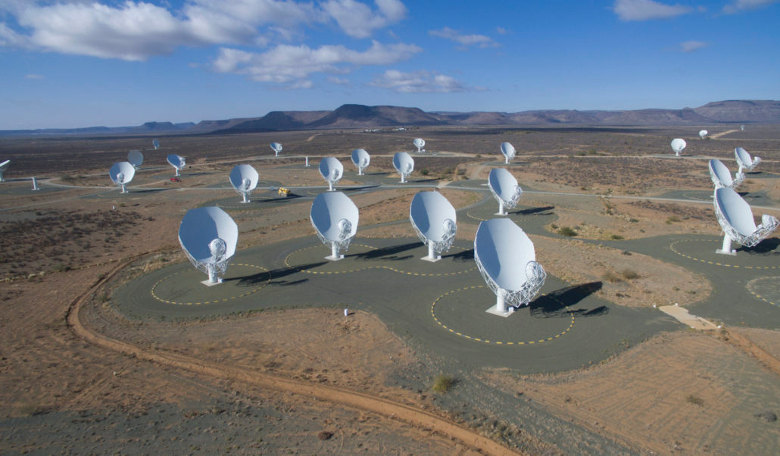To find signs of an advanced civilisation living on another planet, it might take a world of telescope power on our own planet to locate it, and that is just what SETI plans to do, as the organisation’s Breakthrough Listen initiative announces the start of a major new programme with the MeerKAT telescope in South Africa to boost its chance of finding intelligent life elsewhere in the Universe.
At present, Breakthrough Listen primarily uses two telescopes to search for extraterrestrial life; the Green Bank Telescope in West Virginia, USA, and the Parkes Observatory in New South Wales, Australia; as well as the Automated Planet Finder at Lick Observatory in California, USA, which searches for laser signals from alien civilisations.
Last year the initiative launched a new collaboration with Jodrell Bank, Manchester, UK to conduct an independent SETI search via its 76 metre radio telescope and e-MERLIN array. And the year before a collaboration with the FAST telescope in China was announced.
With five continents onboard, Breakthrough is now reaching out to Africa to expand its observing power to an unprecedented level. The project’s Listen instrument at MeerKAT will digitally scan the skies, almost continuously, as it searches a million individual stars – 1,000 times the number of targets in any previous search – for signs of extraterrestrial technology.
"With this new instrument we'll be able to form many beams at the same time, obtaining high resolution data for multiple objects simultaneously," said Listen’s Principal Investigator Dr. Andrew Siemion. "This complements and extends our capabilities at other telescopes, enabling us to survey our cosmic neighbourhood for technosignatures faster than ever before."
Built and operated by the South African Radio Astronomy Observatory (SARAO), and inaugurated only this year in July, MeerKAT is a powerful array of 64 interlinked radio antennas currently being built some 90 kilometres outside the small Northern Cape town of Carnarvon. MeerKAT also serves as a precursor for the Square Kilometre Array; a far-reaching international collaboration that will one day eventually span a million square metres across South Africa and Australia to create the world’s largest radio telescope.
“Listen and MeerKAT are developing next-generation technology and techniques that will ultimately lead to proposals for searches with the Square Kilometre Array. This is an exciting moment for SETI and radio astronomy in general,” said the Breakthrough Initiatives’ Executive Director, Pete Worden.
With the addition of MeerKAT’s observations to its existing surveys, Listen will operate 24 hours a day, seven days a week, in parallel with other surveys and it will be able to collect around four terabits of data per second (4000 gigabits per second). That is a staggering 40 thousand times faster than a typical home internet connection.
The push for finding signs of life is coming from all sides it seems, as a new voluminous, congressionally mandated report recently produced by the US National Academies of Sciences, Engineering, and Medicine suggests that NASA also needs to ramp up efforts in developing mission-ready life detection technologies to further the search for extraterrestrial life.
So far, says the report, NASA’s planetary exploration missions have tended to focus more strongly on geological perspectives, however this should be addressed so that the rapidly-changing field of astrobiology is incorporated into all stages of future exploratory missions.
The report points out, amongst other things, that given how resilient life has been at surviving in some of the most extreme environments on Earth, NASA should use this as an example and focus on searching for life below the surface of a planet.
It is also not enough says the report, to simply search for a biosignature, but the agency also needs to be able to recognise false positive signs i.e. signs of life that are generated from abiotic (non-living) planetary processes. A list of recommended technologies to implement in the search for life are also suggested.











